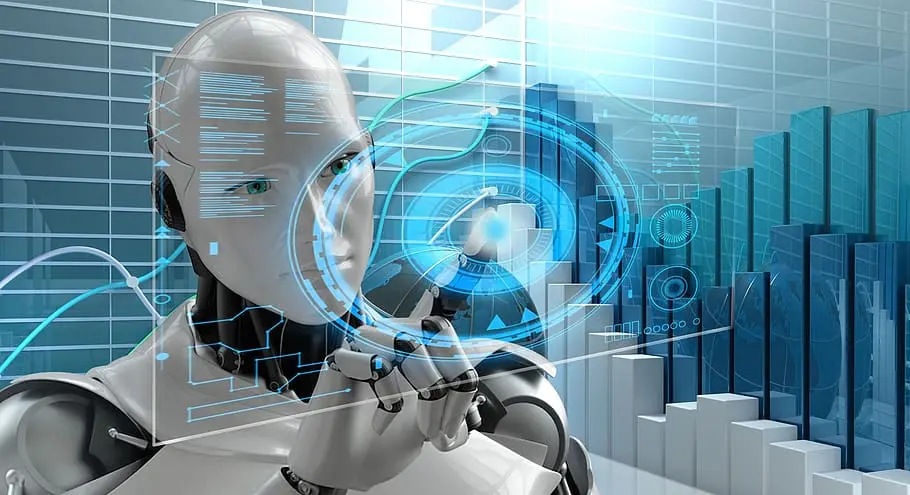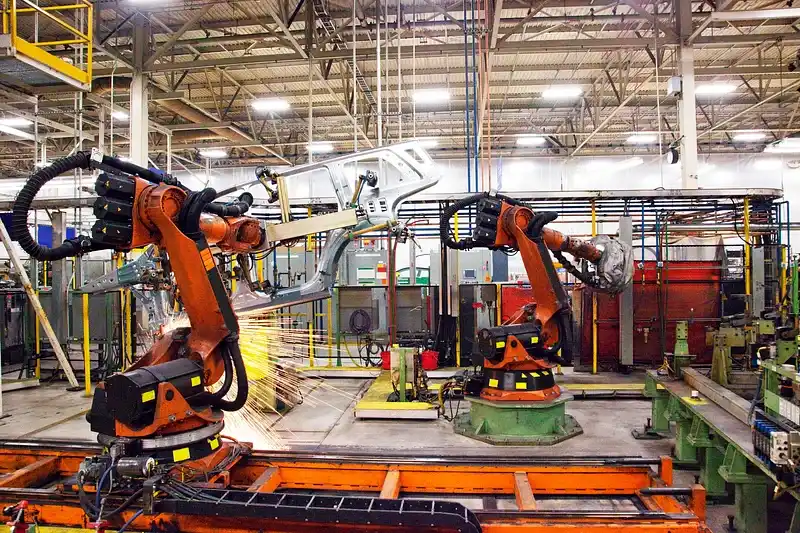Introduction
In the fast-paced world of manufacturing, ensuring the highest standards of quality is paramount. This is where machine vision system software comes into play, revolutionizing the landscape of quality control. This article delves into the intricacies of machine vision, its evolution, applications, advantages, challenges, and future trends, aiming to provide a comprehensive understanding of its capabilities in enhancing quality control processes.
Evolution of Machine Vision System Software
Historical Overview
Machine vision has come a long way since its inception. From rudimentary systems to the sophisticated technologies we have today, the evolution of machine vision has been marked by continuous innovation. Early systems could perform basic tasks, while modern solutions leverage advanced algorithms and high-resolution cameras.
Technological Advancements
The last decade has witnessed significant technological advancements in machine vision. Improved hardware capabilities, coupled with the power of artificial intelligence, have transformed machine vision systems into highly efficient tools for quality control.
Components of Machine Vision System Software
Machine vision relies on several key components, including cameras and sensors, image processing algorithms, and seamless integration with automation systems. These components work in tandem to capture, analyze, and interpret visual information, enabling accurate decision-making in real-time.
Cameras and Sensors
At the core of Machine Vision Systems are cameras and sensors that capture visual data. These can range from basic cameras to more specialized devices, including infrared or 3D cameras. The choice of camera depends on the specific application and the level of detail required for visual analysis.
Image Processing Algorithms
The captured images are processed using sophisticated algorithms that mimic human visual perception. These algorithms enable the system to recognize patterns, detect objects, and make decisions based on the analyzed information. Advanced image processing plays a crucial role in the accuracy and reliability of Machine Vision Systems.
Integration with Automation Systems
Machine Vision Systems are designed to seamlessly integrate with automation systems. This integration allows for real-time decision-making, enabling machines to respond swiftly to the information gathered by the vision system. The collaboration between machine vision and automation enhances efficiency and precision in various industrial processes.
Applications in Quality Control
Defect Detection
One of the primary applications of machine vision in quality control is defect detection. The software can identify even the slightest imperfections, ensuring that only flawless products reach the market.
Dimensional Measurement
Machine vision excels in dimensional measurement, providing precise readings for components and products. This capability is crucial in industries where exact specifications are paramount.
Surface Inspection
The software’s ability to inspect surfaces ensures that products meet aesthetic standards. From detecting scratches to analyzing surface finishes, machine vision contributes to maintaining the desired product appearance.
Object Recognition
One of the primary functionalities of Machine Vision Systems is object recognition. These systems can be trained to identify and distinguish between different objects, even in complex and dynamic environments. This capability is particularly valuable in manufacturing for quality control purposes.
Quality Control in Manufacturing
One of the most significant applications of Machine Vision Systems is in quality control within manufacturing processes. These systems can inspect products for defects, ensuring that only high-quality items reach the market. The speed and accuracy of machine vision contribute to efficient quality control procedures.
Robotics and Automation
Machine Vision Systems are integral to robotics and automation. They provide the visual input necessary for robots to navigate their surroundings, manipulate objects, and perform tasks with a high degree of precision. This application is crucial in industries such as logistics, where automated systems rely on visual data for decision-making.
Security and Surveillance
In security and surveillance, Machine Vision Systems are employed to monitor and analyze visual data from cameras. These systems can detect unusual activities, identify objects or individuals, and enhance overall security measures in various environments.
Advantages of Machine Vision in Quality Control
Accuracy and Precision
Machine vision systems offer unparalleled accuracy and precision, significantly reducing the margin of error in quality control processes.
Speed and Efficiency
The efficiency of machine vision is unmatched, with the ability to inspect thousands of products per minute. This speed not only enhances productivity but also allows for swift identification and rectification of defects.
Cost-Effectiveness
While initial implementation costs may be a consideration, the long-term cost-effectiveness of machine vision in quality control is evident. Reduced errors lead to fewer product recalls and warranty claims, ultimately saving costs.
Importance of Integrating Machine Vision System Software in Manufacturing
In the rapidly evolving landscape of manufacturing, the integration of machine vision System software holds paramount importance. This section explores the reasons behind the significance of incorporating machine vision systems into manufacturing processes.
Enhanced Quality Control
One of the primary reasons for integrating machine vision System software is to enhance quality control. The software’s ability to detect defects, measure dimensions accurately, and inspect surfaces ensures that products meet the highest quality standards. This not only reduces the risk of faulty products reaching the market but also enhances customer satisfaction.
Increased Efficiency and Productivity
Machine vision systems operate at unparalleled speeds, capable of inspecting thousands of products per minute. This rapid processing not only improves efficiency but also increases overall productivity. Manufacturers benefit from swift identification of defects, allowing for immediate corrective actions and minimizing production downtime.
Cost Savings in the Long Run
While the initial investment in machine vision technology may seem significant, the long-term cost savings are substantial. Reduced errors in production result in fewer product recalls and warranty claims, saving manufacturers substantial costs. Additionally, the efficiency gained through automation contributes to a more cost-effective manufacturing process.
Accurate Data for Informed Decision-Making
Machine vision System software generates accurate and reliable data through its precise measurements and analyses. This data becomes invaluable for manufacturers, providing insights into production processes, identifying areas for improvement, and facilitating informed decision-making. The accurate data ensures that adjustments and optimizations are based on real-time information, leading to better outcomes.
Adaptability to Diverse Manufacturing Processes
Machine vision systems are versatile and can be customized to suit diverse manufacturing processes. Whether in automotive, electronics, pharmaceuticals, or any other industry, the adaptability of machine vision System software makes it a valuable asset. Manufacturers can tailor the technology to meet the specific requirements of their unique production processes.
Enhanced Safety Standards
Incorporating machine vision System software in manufacturing contributes to enhanced safety standards. The software can identify potential safety hazards, ensuring a safer working environment for employees. From detecting faulty components to monitoring production lines, machine vision System adds an extra layer of safety to manufacturing facilities.
Compliance with Industry Regulations
Manufacturing industries are often subject to strict regulations and quality standards. Integrating machine vision System software ensures compliance with these standards by consistently and accurately monitoring production processes. This compliance not only avoids legal issues but also enhances the reputation of the manufacturer in the industry.
Challenges in Implementing Machine Vision for Quality Control
Complexities in Diverse Manufacturing Processes
Implementing machine vision System Software in industries with diverse manufacturing processes poses challenges. Adapting the software to different environments requires careful consideration and customization.
Training and Adaptation
Employees need adequate training to understand and operate machine vision systems effectively. Resistance to change can also hinder the seamless integration of these systems into existing workflows.
Future Trends
The future of machine vision System in quality control looks promising. Integration with artificial intelligence is set to further enhance the capabilities of these systems, allowing for more sophisticated analyses and adaptive learning.
How to Choose the Right Machine Vision System Software
Selecting the right machine vision System software involves considering various factors, including the specific needs of the industry, compatibility with existing systems, and the level of technical support provided by the vendor.
Common Misconceptions
Addressing myths about machine vision is crucial for fostering trust in the technology. Clarifying its capabilities helps dispel misconceptions and encourages wider adoption in industries that could benefit from its use.
Industry Adoption Rates
Current trends indicate a growing adoption of machine vision in various sectors. Projections for the future suggest an even greater integration of this technology into manufacturing processes.
Overcoming Implementation Challenges
Best practices for successful integration include thorough employee training, ongoing technical support, and a phased approach to implementation. Overcoming challenges ensures a smooth transition to machine vision System for quality control.
Impact on Job Roles
As automation becomes more prevalent, there is a shift in job roles within the manufacturing sector. While routine tasks may be automated, new opportunities arise for skilled professionals to manage and optimize machine vision systems.
Conclusion
In conclusion, the capabilities of machine vision system software in quality control are transformative. From defect detection to dimensional measurement, the advantages are clear. As industries continue to adopt and adapt to this technology, the future promises even more sophisticated applications, cementing machine vision’s role in ensuring top-notch quality in manufacturing processes. For further inquiries or a demo, you can Contact Trident Information Systems. Stay ahead of the innovation curve! Follow our LinkedIn page for the latest insights and updates on how Vision Intelligence System are revolutionizing The industry.
FAQs
- Is machine vision System software suitable for all types of manufacturing processes?
- Machine vision System software can be customized for various manufacturing processes, but its suitability depends on the specific requirements of each industry.
- How does machine vision System impact job roles in manufacturing?
- While routine tasks may be automated, machine vision System creates new opportunities for skilled professionals to manage and optimize the technology.
- What are the common challenges in implementing machine vision System for quality control?
- Challenges include adapting the software to diverse manufacturing processes and ensuring adequate training for employees.
- Can machine vision System software be integrated with existing automation systems?
- Yes, machine vision System software is designed to seamlessly integrate with existing automation systems, enhancing overall efficiency.
- What are the future trends in machine vision for quality control?
- The integration of artificial intelligence is a significant trend, enabling more sophisticated analyses and adaptive learning in machine vision systems.



